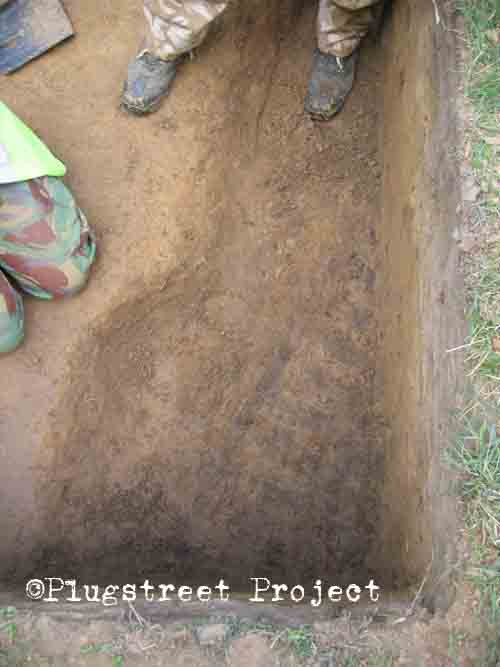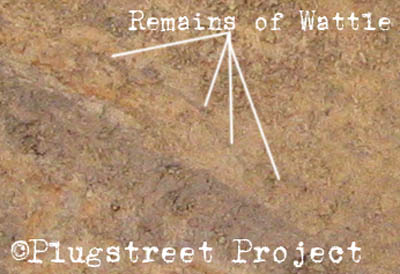The Plugstreet Archaeological Project
German Trench Boards

German Trench Boards.
This section of German Trench Board was found in the German line not far from Ultimo Crater, in Avril's trench.
Trench boards were used by both sides to provide a stable floor in the trenches. The ladder like arrangement of the wooden boards allows water to drain through the gaps, so helping to prevent passing feet puddling the clay into a clinging watery mess. In the harsh conditions of Flanders, especially in winter time, the trench boards would become coated in mud, as each becomes useless in the mud, another set would be laid on top and it is quite common to find layers of trench boards.
With both sides using a similar design, how can we be certain these are German?
The first clue to their origin lies in the trench map. The use of high tech equipment on site means that our geophysics results are plotted using a very accurate GPS system, by matching our geophys grids to contemporary trench maps, we found that the trench we had identified in the ground, matches with a German communication trench marked on the April 1917 map.
Careful excavation of these now delicate trench boards, barely more than a stain in the soil, reveals the construction of the trench. German trenches were lined with timber or wattle, were as the Allies used wriggly tin and expanded metal, in addition to producing a different reading on the Geophysics plot, these differences are very obivous in the archaeology.

This image shows the dark curves of the wattle running parallel to the trenchboards
Links:
|
Website and All Material © Copyright MMX - MMXVII - All Rights Reserved The Plugstreet Archaeological Project Website and Multimedia by Middleton House Productions |

